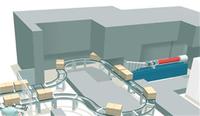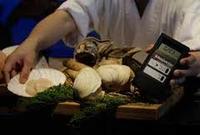-
Diet change required to curb most potent greenhouse gas
N2O is the third highest contributor to climate change behind carbon dioxide (CO2) and methane (CH4), but it poses a greater challenge to mitigate as nitrogen is an essential element for food production; it is also the most potent of these three greenhouse gases as it is a much better absorber of infrared radiation
-
-
E-beam technology to keep food supply safe

More than two million people a year, most of them children, die from food-borne or water-borne illness; more than one-third, or 1.3 billion tons, of the food produced for human consumption every year is wasted or lost because of spoilage; the UN nuclear weapons watch dog, the IAEA, says that irradiating food is a more effective solution for preventing death, illness, and food spoilage than techniques currently in use: heating, refrigerating, freezing, or chemical treatment
-
-
New food fraud database launched
DHS defines food fraud as the deliberate substitution, addition, tampering, or misrepresentation of food, food ingredients, or food packaging, or false or misleading statements made about a product for economic gain; a new database compiles thousands of food fraud reports; the most fraud-prone foods: olive oil, milk, and honey
-
-
Beef Industry Safety Summit notes successes, challenges
The U.S. beef industry says that beef is increasingly safe and that consumers have more confidence in beef safety, but challenges remain
-
-
Developing crop for livestock in dry climates
Scientists at the University of Liverpool are working with international partners to develop new forage crop for the hot and dry climate of regions such as Pakistan and Saudi Arabia
-
-
Earth's crust is slowly being destroyed
New research shows that the Earth’s crust is now undergoing high rates of destruction; the research shows the sharp decrease in the growth of the continental crust indicates a dramatic change in the way the Earth has generated and preserved this crust in the last 4.5 billion years
-
-
Firefly technology sheds new light
A new device, employing the same chemical which lights up fireflies, can easily detect food contamination; the researchers who developed the system hope it will soon be used to test for other diseases, including HIV-AIDS
-
-
Confirmed: oil from Deepwater Horizon disaster entered food chain
For months, crude oil gushed into the water at a rate of approximately 53,000 barrels per day; new study confirms that not only did oil affect the ecosystem in the Gulf during the blowout, but it was still entering the food web after the well was capped
-
-
Antibiotic-resistant bacteria proliferate in agricultural soils
Infectious diseases kill roughly thirteen million people worldwide, annually, a toll that continues to rise, aided and abetted by resistance genes. Now a study finds reservoirs of resistance in agricultural soils
-
-
New antibiotic to make food safer, cows healthier
Chemists discovered a molecule very similar to the antibiotic nisin, found naturally in milk and added to food for decades to fight pathogenic bacteria; the new molecule, geobacillin, is more stable than nisin, which could make it more effective
-
-
Radiation-laced Japanese seafood detected in South Korea

The effects of the Japanese nuclear crisis at the Fukushima Daichii atomic energy plant are continuing to ripple across the world
-
-
CDC: outbreaks linked to imported foods increasing
U.S. food imports grew from $41 billion in 1998 to $78 billion in 2007; as much as 85 percent of the seafood eaten in the United States is imported, and depending on the time of the year, up to 60 percent of fresh produce is imported; the increase in imported food has been accompanied by an increase in foodborne illnesses, with fish and spices the most common sources
-
-
New wheat strain could ease food shortages
Researchers in Australia have developed a new strain of salt-tolerant wheat that could help minimize food shortages
-
-
CDC study finds raw milk is most likely source of dairy outbreaks
A new study by the Centers for Disease Control and Prevention (CDC) finds thatraw milk is 150 times more likely to be the cause offood-borne illnesses than pasteurized milk; a growing number of states have permitted the sale of raw milk
-
-
Universal Detection developing smartphone radiation scanner for food
In the wake of Japan’s nuclear disaster at the Fukushima Daiichi atomic energy plant, concerns over contaminated food supplies have swept the nation, sparking Universal Detection Technology to develop a smartphone radiation detector specifically designed for comestibles
-
- All
- Regional
- Water
- Biometrics
- Borders/Immig
- Business
- Cybersecurity
- Detection
- Disasters
- Government
- Infrastructure
- International
- Public health
- Public Safety
- Communication interoperabillity
- Emergency services
- Emergency medical services
- Fire
- First response
- IEDs
- Law Enforcement
- Law Enforcement Technology
- Military technology
- Nonlethal weapons
- Nuclear weapons
- Personal protection equipment
- Police
- Notification /alert systems
- Situational awareness
- Weapons systems
- Sci-Tech
- Sector Reports
- Surveillance
- Transportation
Advertising & Marketing: advertise@newswirepubs.com
Editorial: editor@newswirepubs.com
General: info@newswirepubs.com
2010-2011 © News Wire Publications, LLC News Wire Publications, LLC
220 Old Country Road | Suite 200 | Mineola | New York | 11501
Permissions and Policies
Editorial: editor@newswirepubs.com
General: info@newswirepubs.com
2010-2011 © News Wire Publications, LLC News Wire Publications, LLC
220 Old Country Road | Suite 200 | Mineola | New York | 11501
Permissions and Policies
